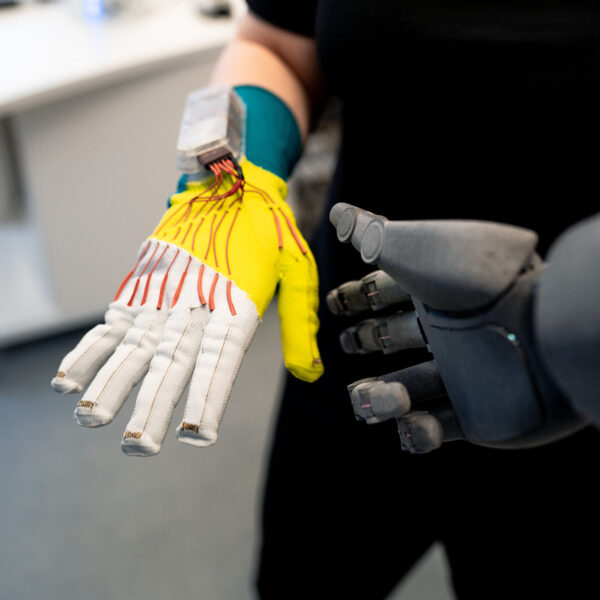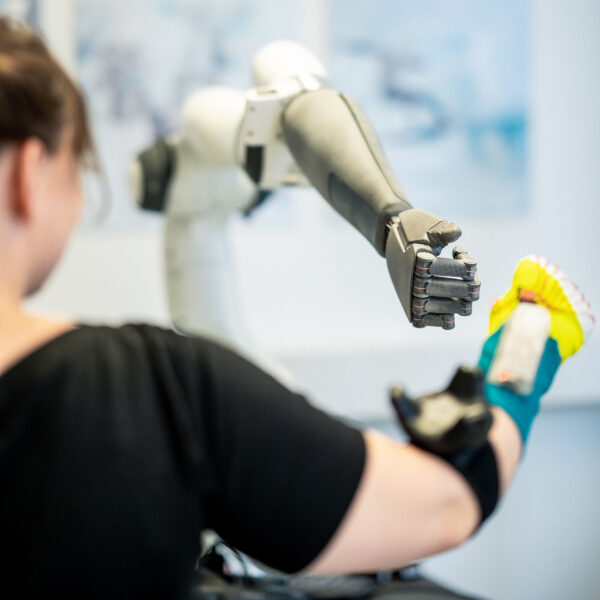Greeting a robot with a handshake sounds like vague future technology, but it is already possible without any problems. The interdisciplinary team of researchers develops an interactive demonstrator that can mirror the movements of one’s own hand to a robot hand using sensors in a glove. The interaction is centered around greeting gestures. Humans and robots can develop their own greeting ritual (handshake, fist bump, peace sign, waving), which the robot can recognize and save in the future. Hello Robot is intended to act as a research platform on the one hand and as a communication tool with the public on the other. It will be shown at Hannover Messe at the BMBF booth from May 30 until June 2.
The demonstrator is a further development of the “Rock, Paper, Scissors”- demonstrator from CeTI at TU Dresden, which was awarded the Saxon State Prize for Design. It is a result of a fruitful exchange between CeTI and 6G-life scientists. The new, smaller measuring system in the glove makes the demonstrator more mobile and technically much less demanding to support. In addition, the gesture recognition has been extended to a significantly better mirroring of human hand movements. The natural approach of the greeting gesture serves as a low-barrier entry point for visitors on public events to interact. The playful interaction has potential to generate public interest in research to help shape future human-robot interactions.
Funcionality
The demonstrator Hello Robot enables natural interaction with a robot. Users wear a glove that captures finger movements, recognizes gestures and eventually transmits them to the robotic hand. The demonstrator consists of a robotic arm with a 3D-printed human-like hand, the customized glove with textile-integrated sensors and a processing unit on the back. It is a knitted glove equipped with strain sensors directly in the textile, positioned at the tops of the fingers, resulting in a measurable strain of the sensors in case of finger bending. The sensor chosen was an electrically conductive coated polymer yarn that behaves in such a way that its electrical resistance changes when exposed to mechanical stress. Movements and rotations of the human hand or arm are recorded by a highly miniaturized measuring system, which is located directly in the glove in a specially developed miniature printed circuit board. The raw analog data is processed to recognize the gestures of the person wearing the glove. The microprocessor in the robotic hand then reads the command to copy the desired gesture.
Cooperation Partners






